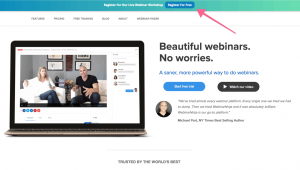Looking to keep ahead of the curve in your marketing career? Columnist Brent Hieggelke shares the trends and technologies that will help you be innovative and thrive as a CMO.
 Over the last two years, the average tenure of an American chief marketing officer has dropped by six months, according to consulting firm Spencer Stuart. Today’s CMO lasts just 42 months — or three and a half years — on the job.
Over the last two years, the average tenure of an American chief marketing officer has dropped by six months, according to consulting firm Spencer Stuart. Today’s CMO lasts just 42 months — or three and a half years — on the job.
The reason for this? CMOs are tasked with disruptive growth more than any other member of the C-suite. As a result, strategies are completely based on hitting home runs, when singles and doubles will probably get the job done just as well.
CMOs can fix this trend for themselves by simply adjusting a few of their strategies. There is always pressure to make small tweaks to what has traditionally worked well.
Today, marketers need to be problem-solvers and connectors, and continually look for better ways to form relationships with their customers, and not simply become victims of inertia — i.e., just doing more of what has always worked in the past. Most CMOs are too slow to adopt things that would position them and their brands as more innovative, authentic and modern.
So here are a few ideas to consider getting started on over the summer to ensure you’re still in the role by the holidays.
Move more aggressively to video
Everyone has a screen on them at all times, and the act of binge-watching is all too common. This change in consumer behavior means that marketers need to move from simply content marketing and start looking more at broadcast marketing.
Marketers are ill-equipped to handle the demand for big content, according to a Gartner report published in May 2015. While we have evolved over the two years, this still seems to be a major issue.
Start thinking about your content and how it could be viewed in video form. Consider hiring video pros as part of your marketing team, or consult with video talent for both capture and editing — because soon enough, video will be a required element of your marketing mix.
Buy video equipment. Start working with live video that you embed into your owned channels for streamlining and modernizing your go-to-market process. This needs to be a skill set, just like writing and design. Far too often, we hear about companies that don’t have basic video capabilities for creating content.
Activate artificial intelligence
In the past, CMOs got their hands dirty with surveys, polling, beta testing and so on. And that route is still available today. But marketers are increasingly able to turn to machine learning and AI for many things they need and want to know about delivering the savviest solutions to consumers.
From video discovery to demographics, social sharing behaviors and other consumer priorities, AI is quickly handing marketers the tool set to get to most out of any spend — especially on the digital side. Even your advertising budgets can find automation to be a useful tool. Companies like LoopMe help optimize mobile video ads by using AI.
This all may seem daunting at first, but automating this part of the marketing task set potentially frees up time for those “disruptive” endeavors the CEO is looking for. Or better yet, it’s making those perceptively risky decisions more measured and informed, creating more wins out of a making a few bets on innovation.
Get personal
Admittedly, AI can help facilitate this, and video can be the method you choose to deliver a more personalized message. But prioritizing a customized experience can make simple ideas far more effective for brands — and result in a far more passionate (and positive) response from customers.
Consumers today are demanding a personalized experience when dealing with companies, and they’re willing to hand over some data to do it. CMOs have a golden opportunity to make good use of the exchange there, and also eliminate marketing waste by giving their audience what they want.
AI allows marketers to better understand the context and often the emotion of their audience, giving them an opportunity to create a rapport with their consumers in a way that wasn’t possible before.
Brands like Netflix and Amazon are already employing AI as part of their recommendations. Digital assistants like Siri, Alexa and Cortana are helping answer questions in the home, and chatbots have become popular with brands like American Eagle Outfitters, Sephora and Whole Foods to help customers with tasks like shopping for clothes, purchasing makeup and browsing for recipes.
The idea is to build a closer relationship with your customers through technology that thinks like a human and automates the human-to-human experience across your digital properties for new and existing customers.
Marketers need to consider both the short- and long-term benefits of AI. Research released by Forrester showed AI-powered marketing solutions are increasing efficiency in the short term by automating processes and surfacing consumer insights. In the longer term, AI-powered marketing solutions will autonomously create and deliver customer interactions, enabling powerful contextual marketing and driving marketing performance. As Forrester predicted:
AI will drive faster business decisions in marketing, e-commerce, product management and other areas of the business by helping close the gap from insights to action.
CMOs’ jobs are getting tougher, but the tools they can use to create more security in their roles and extend their stay at their current companies are as expansive as ever. Resist the urge to just keep doing what you are doing. Get innovating with a few of these ideas, and at least claim credit for becoming more agile.
Some opinions expressed in this article may be those of a guest author and not necessarily Marketing Land. Staff authors are listed here.
Marketing Land – Internet Marketing News, Strategies & Tips
(64)
Report Post








